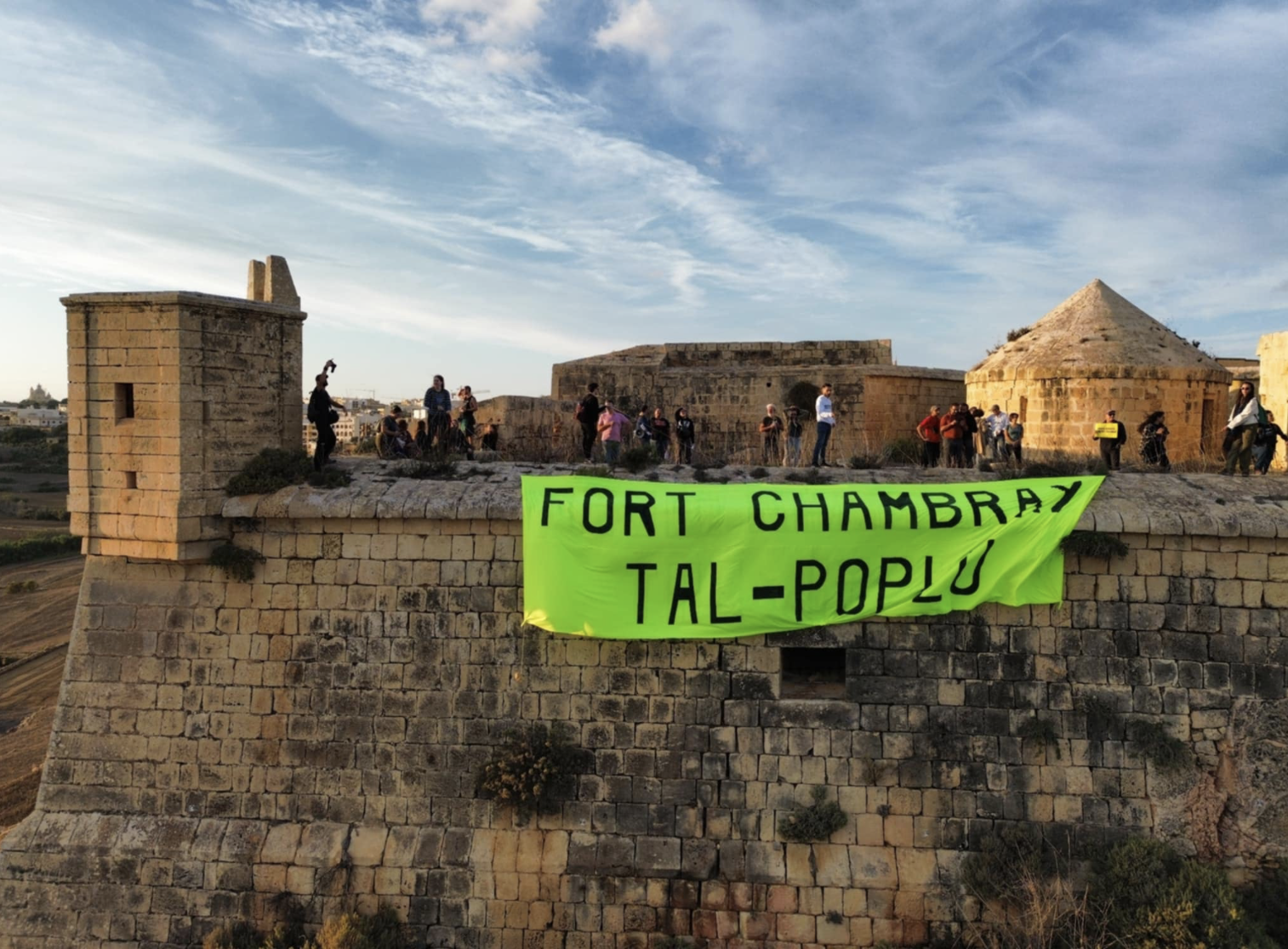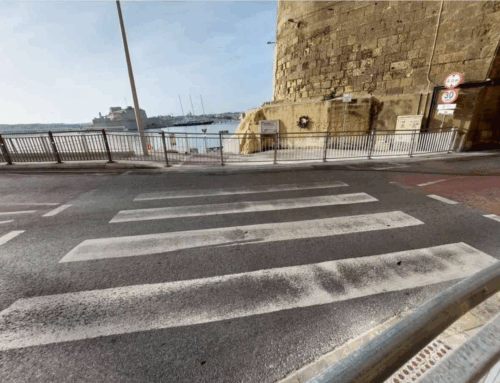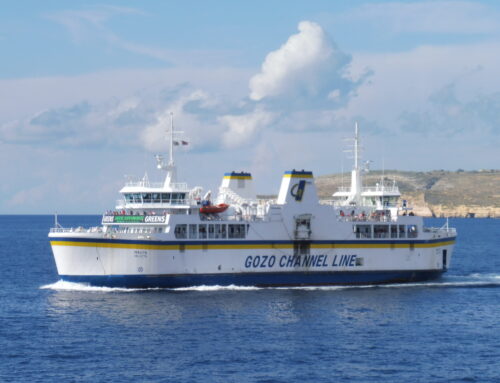Fort Chambray is a cornerstone of Gozo’s cultural and historical identity. Established in the 18th century as a strategic fortress, it has played a pivotal role throughout various historical periods, from the rule of the Knights of St. John to the French and British occupations. Over the centuries, the fort has stood as a testament to Malta’s resilience and architectural heritage. However, recent developments threaten to erase a significant part of this history, particularly endangering the British-era barracks.
Historical Background and Development of Fort Chambray
The fort’s evolution has been marked by several development projects. In 1998, plans were introduced to redevelop the area, with subsequent investments taking place in phases starting in 2004. By 2012, however, development had largely stagnated, and little progress has been made since, aside from minor adjustments. Now, the current project proposes a drastic transformation, particularly affecting the British barracks. In Malta, there are approximately 86 scheduled barracks classified as Grade 1 or Grade 2, along with some Grade 3 barracks that, while not as old as the British barracks at Fort Chambray, have still been granted protection. However, the British barracks at Fort Chambray, believed to be the first in the British Empire designed to accommodate military families, remain unscheduled, putting them at risk of demolition despite their historical significance. Without proper heritage status, this important historical site faces significant loss.
The British barracks, a structure integral to the fort’s historical fabric, are slated for demolition to make way for additional buildings. While the exact date of their construction remains uncertain, some sources suggest they were built around 1898 by Victor Vella, who was also involved in the construction of Ta’ Pinu Church. Additionally, a map dated 24 March 1895 already depicts the barracks in their current location, indicating they were at least planned, if not completed, by that time. A photograph from 1903–1904 further confirms their existence, as it features the barracks’ chimney, which would have been one of the final structural elements installed.
Over the years, the barracks have served various purposes, first being repurposed as a hospital in 1929, later used as an asylum after World War II, and eventually functioning as a hotel in the 1980s. Despite decades of exposure to the elements and a lack of maintenance, the structure remains largely intact, proving that restoration is feasible.
Threat of Demolition and Lack of Heritage Protection
Despite the historical significance of the British barracks, they remain in a precarious position under Malta’s heritage laws. In 2005, the entire fort was scheduled, including the Knight-period barracks and the Knights’ bakery. However, the British barracks were excluded from this designation due to ongoing development plans, leaving their future uncertain.
Rather than granting them immediate protection, an unusual clause was introduced, stating that the scheduling of the British barracks would be considered following the outcome of pending development applications. This effectively means that, while they are technically scheduled for now, their status remains temporary and subject to change based on future decisions. This approach is highly irregular in Malta’s heritage preservation policies and has left the barracks at risk of demolition.
Heritage NGOs have long advocated for the scheduling of the barracks to prevent their destruction. If they had been scheduled, any alterations or demolitions would have required strict permits and heritage integration within new developments. The government would have been responsible for ensuring their preservation.
The latest architectural plans, publicly available on the Planning Authority services portal, explicitly state that the British barracks will be demolished. According to reports by the Superintendence of Cultural Heritage, the latest drawings were supposed to align with preservation efforts. However, the actual plans indicate that only 16% of the barracks will be retained, with 84% facing demolition. The proposed approach involves dismantling the stone façade and reattaching it to a five-story modern hotel in another part of the fort—a solution that disregards the historical integrity of the building. One of the critical aspects of the British barracks is their original orientation, which was deliberately designed to enhance comfort. The structure was positioned to maximize sunlight exposure during the winter months, ensuring warmth, while in the summer, the orientation effectively limited direct sunlight, keeping the interior cool. This thoughtful architectural feature, integral to the barracks’ historical and functional identity, will be entirely lost if they are relocated.
Public Access and Contractual Violations
Public access to Fort Chambray has also been an issue. A contract passed in Parliament in 2004, following pressure from the Għajnsielem Local Council, mandated that the area remain accessible to the public. This provision was entirely ignored for 20 years, and access has been systematically restricted. Under the original contract, the public was to be granted access to a pathway overlooking the Gozo Channel, leading to the Knight-period barracks. Instead, this area is now earmarked for a swimming pool. Visitors seeking to reach the historical site would have to navigate private sunbeds and restricted zones.
The contract signed last year (2024) in Parliament lacks clear provisions on public access, unlike the 2004 agreement, which explicitly mapped out pedestrian routes. The fact sheet presented to the local council by the developer does not align with previous agreements, raising concerns about the transparency of the project. Additionally, the phrasing in the 2024 contract leaves access rights to the discretion of whoever is running the fort, introducing a legal loophole that could permanently restrict public entry.
Neglect of Restoration Responsibilities
Under the terms of the 2004 contract, the company acquiring Fort Chambray was required to allocate 200,000 Maltese Lira toward fortification restoration. While the previous developer fulfilled this obligation, the new developer is not bound by any further commitments to restore the fort. The Maltese government is expected to undertake the costly task of reinforcing the fort’s clay-based foundation, but no clear provisions exist regarding long-term maintenance responsibilities once restoration is completed.
GUG’s Position
GUG strongly disapproves of the recent decision by the Planning Authority to sanction the dismantling and demolition of the historic British Barracks at Fort Chambray, Gozo, in favour of residential and commercial developments.
While we acknowledge the challenges of preserving older structures, the argument that the barracks have been rendered unsuitable for conservation is both shortsighted and dismissive. Evidence presented by conservationists and NGOs underscores that these buildings, despite minor modifications, largely retain their original structure. Restoration, not demolition, should have been the guiding principle for their treatment.
This decision represents a wider and troubling trend of prioritising commercial gain over the preservation of Malta’s unique cultural heritage. By sidelining historical authenticity and context, we risk eroding what makes our nation’s past meaningful and accessible to future generations. Moreover, such developments tarnish the distinct character of Gozo, diminishing its appeal not only to residents but also to scholars and visitors who seek its rich historical fabric.
As a Gozitan student organisation, we are deeply concerned about the long-term implications of such decisions for our island’s heritage and identity. We urge the authorities to reconsider this course of action and prioritise the protection of Fort Chambray. Malta’s heritage is a shared responsibility, and its preservation must precede transient economic interests.
Endorsed By: Din l-Art Ħelwa, GħSL.
Reference: https://fb.watch/xEvDY17KW2/
Featured Image: Moviment Graffiti









Leave A Comment